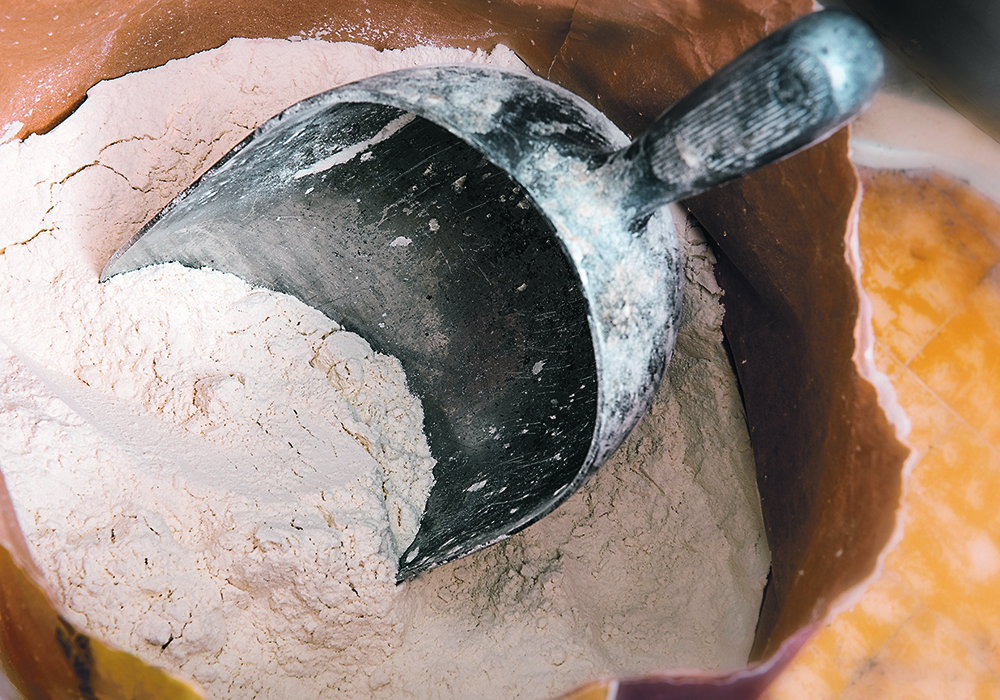Canada’s wheat industry has developed a new educational tool to help combat falling per capita flour consumption in North America.
Cereals Canada, provincial wheat commissions and the Canadian National Millers Association recently launched the What About Wheat? website.
“It’s a brand-new brand and tool,” said Ellen Pruden, director of communications with Cereals Canada.
They are billing the site as the “go-to resource” for up-to-date, science-based wheat nutrition information.
“We’re targeting dietitians and we’ll be reaching out and targeting consumers in the next little bit,” said Pruden.
Read Also

Canadian Food Inspection Agency red tape changes a first step: agriculture
Farm groups say they’re happy to see action on Canada’s federal regulatory red tape, but there’s still a lot of streamlining left to be done
Annual per capita flour consumption in the United States fell to 58.6 kilograms in 2021, the lowest level since 1989.
That is not an anomaly. Consumption has been trending down in that important market for Canadian wheat over the past 25 years, according to a World-Grain.com editorial written by Josh Sosland.
Consumption is down eight kilograms per person from the modern peak of 66.6 kg per capita in 1997.
That amounts to 2.67 billion kilograms of lost flour demand per year in the U.S. from peak levels. It is the equivalent of losing 19 flour mills and 200 bakeries.
At recent prices of US$30 per hundredweight (cwt), that amounts to US$17 billion in lost annual bulk flour sales, said Sosland.
“The potential to recover this lost ground ought to be within reach,” he said.
“A majority of Americans consume grains at levels lower than recommended in the Dietary Guidelines for Americans.”
Gordon Harrison, president of the Canadian National Millers Association, said the Canadian market is trending in the same direction.
Per capita consumption in Canada fell to 60.2 kilograms per person in 2019 from 69.2 kg. in 2000.
Total wheat grind has barely budged in the past couple of decades, while Canada’s population has grown by about eight million people.
He attributes declining rates of consumption to decades of fad diets like the Atkins Diet and the Keto Diet and books like Wheat Belly and Grain Brain.
These “radically different” diets focus on the avoidance of carbohydrates and wheat in particular.
“Taken together, these have had the unfortunate influence of discouraging many consumers from eating wheat-based foods that have sustained Canadians for generations,” said Harrison.
Foods made with enriched white flour or refined grains are not getting the credit they deserve despite the Nutrition Facts table presented prominently on today’s food labels.
“What we have not accomplished as a country for more than a generation, is educating consumers of all ages about balanced nutrition, food sources of essential nutrients and how to read and interpret food labels while making food choices,” he said.
He thinks the What About Wheat? initiative will make an important contribution to improving the knowledge of educators, nutrition professionals and consumers about the nutrition and health-based benefits of wheat-based foods.
Pruden said the website publishes “tidbits” of scientific information on wheat nutrition with links to the full studies.
It includes information on the importance of whole grain dietary fibre in the promotion of gut health, the enrichment and fortification of all-purpose flour and about embracing gluten as a protein.
Cereals Canada has hosted a webinar for dietitians to introduce them to this new source of information.
Information published on the website has been vetted through the Science Advisory Council, a five-person panel comprising researchers and registered dietitians.
















